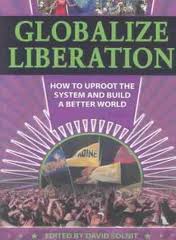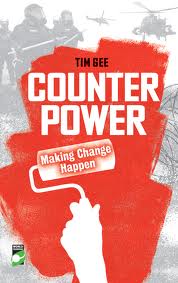Lately I’ve been thinking about frameworks for social change, and I’ve been intending to write about them here for some time. As always, it pays to start with research – and I see the good folks from Training for Change have already put together information on three models, by Martin Luther King, Jr, George Lakey, and Bill Moyer. To these three frameworks I’m adding a summary of the Counterpower model by Tim Gee, which I learnt about through another great crew of activist educators, Rhizome in the UK.
But before we get to those frameworks, what is it that’s helpful about a framework for social change? Bill Moyer, in his introduction to the Movement Action Plan, wrote:
“The lack of a practical analytic model which describes the long process normally taken by successful social movements disempowers activists and limits the effectiveness of their movements. Without the guiding framework that explains the step-by-step process that social movements go through, many activists are unable to identify successes already achieved, set long and short term goals, confidently develop strategies, tactics, and programs, and avoid common pitfalls.”
Training for Change writes: ‘Frameworks can assist us in thinking about “what’s next” for us and contextualizing our day-to-day work.’ A framework can help us analyse changing situations, and match the right tactics to those situations. It can also help us understand the role and strategic importance of different players at different points in time.
When training people in the Movement Action Plan (MAP) I have wondered what people then do with that information – does it change the way they organise, campaign and think about their work? I know for myself that to a certain extent I’ve internalised the MAP. For example, when the Victorian Civil and Administrative Tribunal recently ruled in favour of the dirty polluting HRL power station I viewed that as ‘proving the failure of official institutions’, a necessary step on the path to eventual success. In this way having a framework for long term change can bolster us against the inevitable setbacks along the way, and guard against demoralisation and burn-out… although Moyer even included the likelihood of burn-out in his model.
All of these frameworks are informed by social movement history – another demonstration of the value of evaluating and documenting campaigns, to inform future practice. Check out these four frameworks and share your thoughts in the comments below.
———————————————————-
Six stage campaign planning framework – Martin Luther King, Jr.
This framework assists groups to think ahead and plan as the campaign builds. The starting point is framing the group’s issue, then the following stages:
- 1. Gather information;
- 2. Do education and leadership development;
- 3. Negotiate with target;
- 4. Increase motivation and commitment for the struggle ahead;
- 5. Direct action;
- 6. Create new relationship with opponent. which reflects the new power reality.
Based on Martin Luther King-related campaigns in the Deep South of the U.S. Read more from the American Peace Test Nonviolence Trainer’s Manual.
———————————————————-
Five stage revolutionary movement framework – George Lakey
The five stages are presented in sequence which shows how each preceding stage builds capacity for the next stage – but in reality the stages overlap and are cyclical. The five stages are:
- 1. Cultural preparation;
- 2. Organization-building;
- 3. Confrontation;
- 4. Mass noncooperation;
- 5. Parallel institutions which can carry out the legitimate functions formerly carried out by the Old Order (economic, maintaining infrastructure, decision-making, etc.)
For more see George Lakey’s chapter in Globalize Liberation, edited by David Solnit; and the article on the Training for Change website.
———————————————————-
Eight stage reform social movement framework – Movement Action Plan, by Bill Moyer
Moyer’s framework relates to change in liberal democratic societies, and is based on experience and research of many social movements. A number of case studies are included in Doing Democracy and online. Moyer’s ‘four roles of activists’ is also a valuable contribution, and the MAP shows how different roles are key at different stages. The stages are:
- 1. Normal times
- 2. Prove the failure of institutions
- 3. Ripening conditions
- 4. Social movement take-off
- 5. Identity crisis of powerlessness
- 6. Majority public support
- 7. Success
- 8. Continuing the struggle
Read Bill Moyer’s excellent book, Doing Democracy; see the Training for Change article for more information; and the introduction to MAP and case studies on the History is a Weapon site.
———————————————————-
Four stage model for making change happen: Counterpower by Tim Gee
Gee states :
“The power of any regime rests three main things –ideas (the ability to persuade us of their right to rule), economics (the ability to extract land, labour and capital from us) and physical coercion (the ability to punish us if we do not obey). If a movement can seriously challenge those facets of power, then elites will give away whatever concessions that they have to in order to maintain their rule – and so campaigns are won. If the movement is strong enough it can topple regimes altogether – hence the argument that a successful campaign is an unfinished revolution. The ability to remove the power of elites is our Counterpower.”
- 1. Consciousness is the stage of realizing that there is a problem and creating the conditions for Counterpower.
- 2. Coordination is the stage of building Counterpower through a movement to challenge the problem.
- 3. Confrontation is the stage when Counterpower is used most intensely, as the movement challenges the target’s power outright.
- 4. Consolidation is about maintaining Counterpower, adjusting to the new balance of power following the Confrontation Stage, and ensuring that it turns into real-life change.
Find out more – buy the book; read an interview with Tim Gee on the Rhizome blog; and see the series of posts on Counterpower on the Citizen Action Monitor blog.
———————————————————-
What do you notice about these frameworks? How have you used frameworks? What do you find useful – or not – about frameworks? Please share your thoughts, and feedback on the four frameworks included here, in the comments below.
Obviously these frameworks reflect particular theories of change, and some fit different political contexts better than others. We will be exploring Theories of Change at the next Melbourne Campaigners’ Network gathering, Thursday 10 May, 6pm – 8pm at the Wheeler Centre – hope to see you there.

